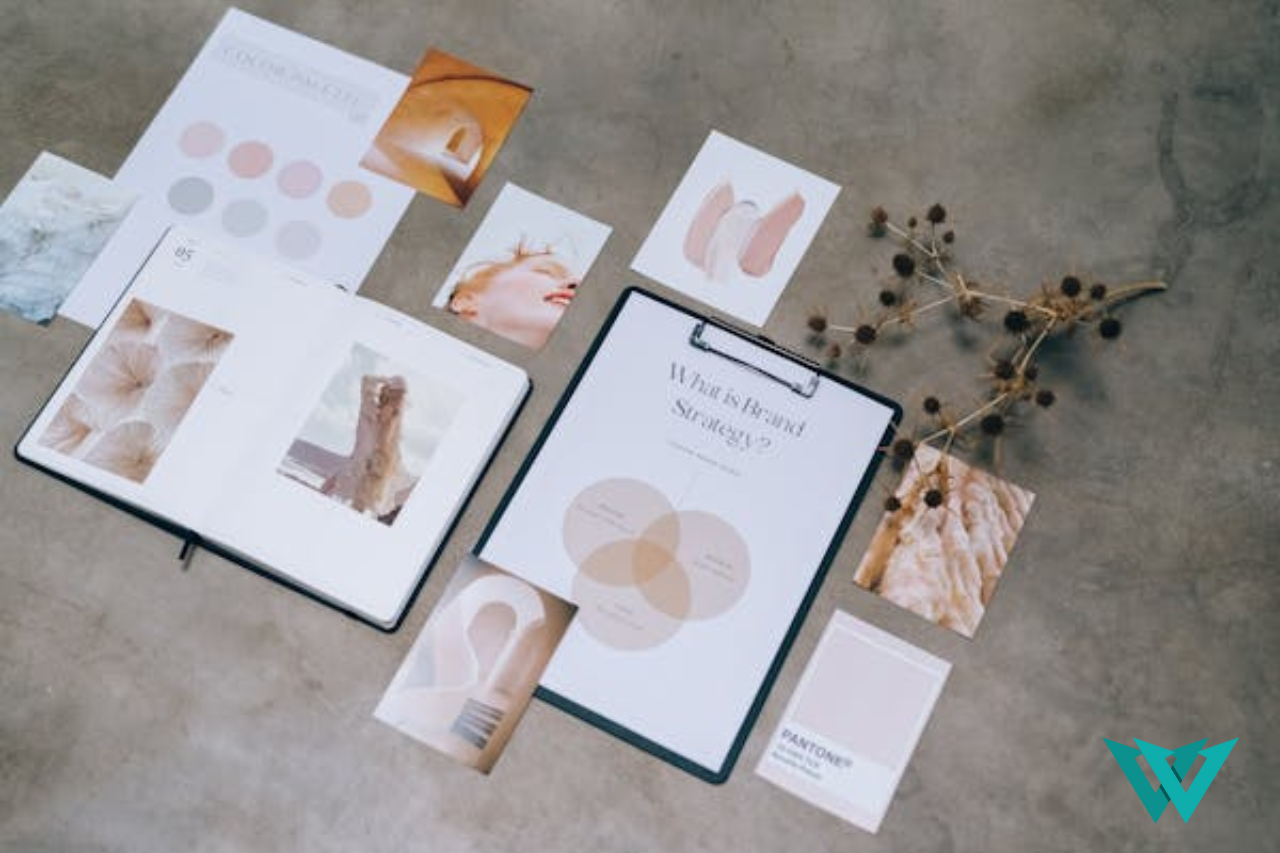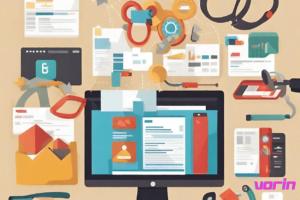Unlock your creative potential with ‘Empower Your Creative Process: 7 Key Steps to Mastering Moodboard Creation’. Discover the essential techniques and strategies to craft compelling moodboards that inspire and captivate your audience. From gathering inspiration to selecting imagery and refining your vision, this comprehensive guide will empower you to elevate your design projects to new heights. Whether you’re a seasoned designer or a budding creative, these seven key steps will guide you through the process of moodboard creation with confidence and clarity. Dive in and unleash your creativity today!
Define Your Purpose and Goals Mastering Moodboard Creation
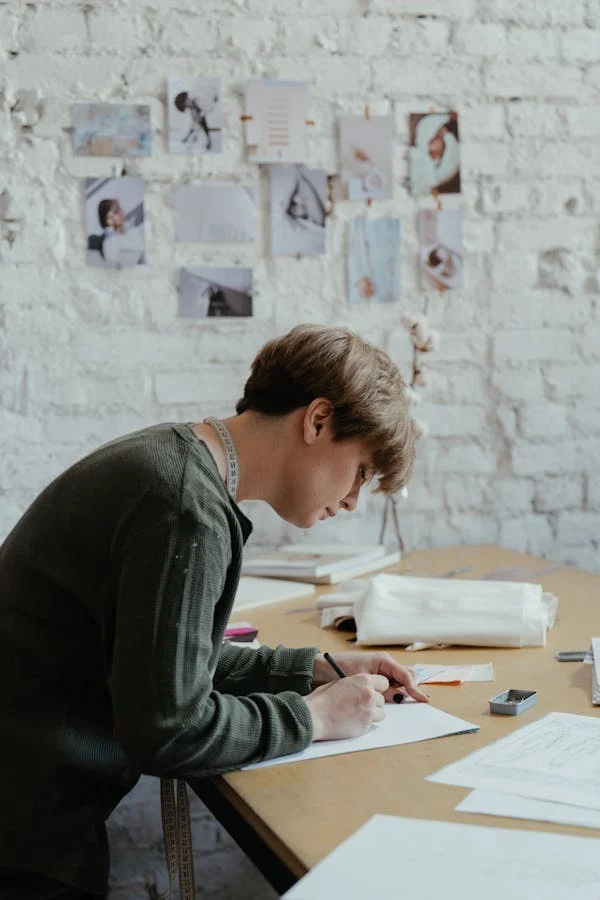
Before diving into the creative process of moodboard creation, it’s crucial to establish a clear understanding of your purpose and goals. Take a moment to reflect on the project at hand and consider what you aim to achieve with your moodboard. Are you seeking to convey a specific mood or emotion? Do you want to showcase a particular style or aesthetic? By defining your purpose and goals upfront, you’ll lay a solid foundation for your creative endeavors and ensure that your moodboard effectively communicates your vision to your audience.
Start by asking yourself key questions about the project’s objectives and desired outcomes. What message do you want your moodboard to convey? Who is your target audience, and what do you want them to take away from your presentation? By identifying these fundamental elements, you’ll gain clarity on the direction of your moodboard and ensure that every design choice aligns with your overarching goals.
Additionally, consider the context in which your moodboard will be presented. Are you pitching a concept to a client, collaborating with a team, or showcasing your work to the public? Understanding the intended audience and purpose of your moodboard will help you tailor your approach and create a compelling visual narrative that resonates with your viewers.
Ultimately, defining your purpose and goals sets the stage for a successful moodboard creation process. It serves as your guiding light, informing every decision you make and ensuring that your final product effectively communicates your ideas and intentions. So take the time to clarify your objectives upfront, and watch as your moodboard comes to life with purpose and meaning.
Gather Inspiration from Diverse Sources
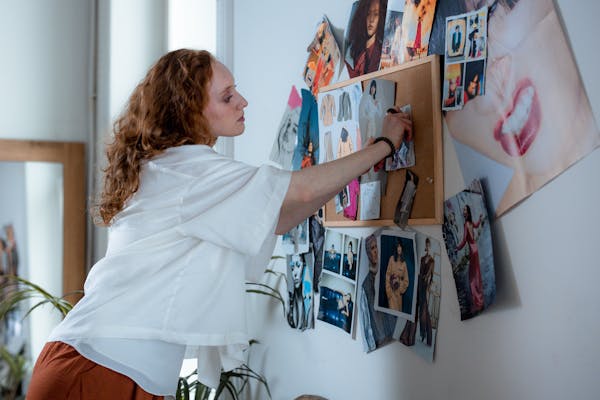
Diving into the process of moodboard creation begins with a rich exploration of inspiration from a variety of sources. Cast your net wide and immerse yourself in diverse mediums, from art and photography to nature, fashion, architecture, and beyond. Draw inspiration from unexpected places, allowing yourself to be captivated by the interplay of colors, textures, shapes, and themes that surround you. Whether it’s a stroll through a bustling cityscape, a leisurely browse through a magazine, or a deep dive into online galleries and social media feeds, the world is teeming with inspiration waiting to be discovered.
Embrace the serendipity of discovery as you gather snippets of inspiration from your surroundings. Keep a keen eye and an open mind, allowing yourself to be drawn to images, textures, patterns, and concepts that resonate with your creative vision. Don’t be afraid to venture outside your comfort zone and explore new territories, as inspiration often lurks in the most unexpected places.
Moreover, seek out diverse perspectives and voices to enrich your creative process. Engage with artists, designers, and creatives from different backgrounds and cultures, learning from their unique perspectives and experiences. Attend workshops, exhibitions, and events to expand your horizons and connect with like-minded individuals who share your passion for creativity.
By gathering inspiration from diverse sources, you’ll infuse your moodboard with a rich tapestry of ideas and influences that reflect the depth and complexity of your creative vision. Embrace the journey of exploration and discovery, and watch as your moodboard comes to life with an eclectic mix of inspiration that sparks curiosity, wonder, and imagination.
Curate a Collection of Visual Elements
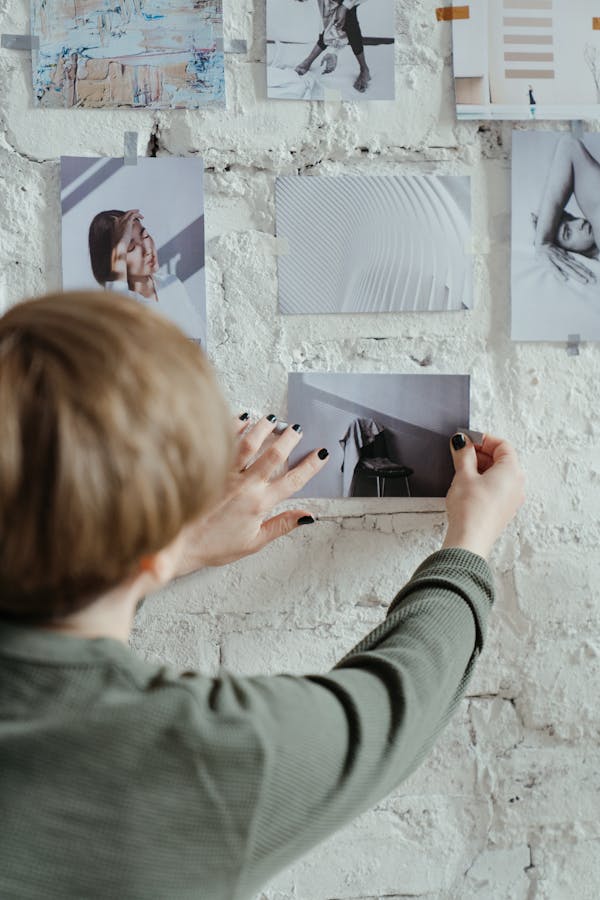
Once you’ve gathered a wealth of inspiration, it’s time to curate a carefully selected collection of visual elements that will form the foundation of your moodboard. Begin by reviewing the diverse sources of inspiration you’ve gathered, identifying key images, textures, colors, and patterns that resonate with your creative vision and align with the goals of your project. Look for cohesive themes and motifs that tie your inspiration together, creating a cohesive narrative that will guide the visual storytelling of your moodboard.
As you curate your collection of visual elements, consider the mood and emotion you want to evoke with your moodboard. Are you aiming for a serene and tranquil atmosphere, or a bold and dynamic energy? Choose images and textures that evoke the desired mood, selecting a mix of photographs, illustrations, and graphics that complement each other and contribute to the overall aesthetic of your moodboard.
Moreover, pay attention to the composition and arrangement of your visual elements, ensuring that each image and texture is thoughtfully placed to create a harmonious and visually engaging layout. Experiment with different combinations and arrangements, exploring various compositions until you find the perfect balance that brings your creative vision to life.
Throughout the curation process, trust your instincts and allow your intuition to guide you. Don’t be afraid to edit and refine your collection, removing elements that don’t align with your vision and adding new ones that enhance the overall impact of your moodboard. By curating a thoughtfully curated collection of visual elements, you’ll lay the groundwork for a moodboard that captivates and inspires your audience, conveying your ideas and emotions with clarity and precision.
Organize and Arrange Your Moodboard Layout
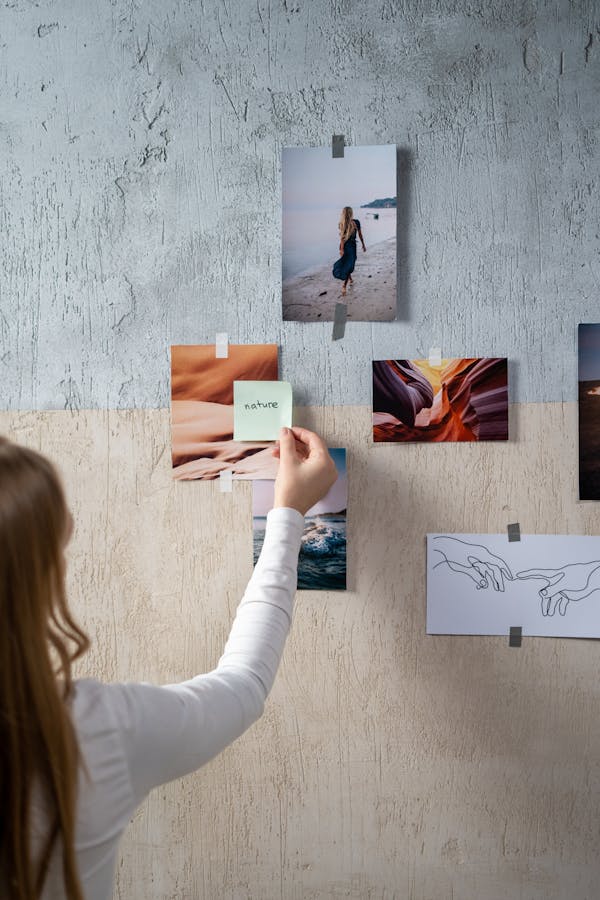
As you move forward in the process of moodboard creation, it’s essential to organize and arrange your visual elements in a thoughtful and cohesive layout. Consider the overall composition of your moodboard, paying attention to factors such as balance, symmetry, and visual hierarchy. Begin by selecting a central focal point or theme that will anchor your layout, providing a clear focal point for your audience to engage with.
Next, experiment with different arrangements and compositions, exploring various placement options until you find the layout that best communicates your creative vision. Consider factors such as proximity, contrast, and scale, strategically arranging your visual elements to create a dynamic and visually engaging composition. Group related images and textures together, creating visual clusters that tell a cohesive story and guide the viewer’s eye through your moodboard.
Moreover, pay attention to the flow and rhythm of your layout, ensuring that each visual element transitions smoothly into the next. Experiment with different spacing and alignment techniques, creating a sense of movement and progression that keeps your audience engaged from start to finish. Don’t be afraid to play with asymmetry and negative space, using these design principles to add visual interest and depth to your moodboard.
Throughout the process of organizing and arranging your moodboard layout, trust your instincts and allow your creativity to guide you. Don’t be afraid to experiment with different ideas and iterate on your design until you find the perfect balance that brings your creative vision to life. By carefully organizing and arranging your visual elements, you’ll create a moodboard that not only captivates and inspires your audience but also effectively communicates your ideas and emotions with clarity and precision.
Experiment with Color Palettes and Textures
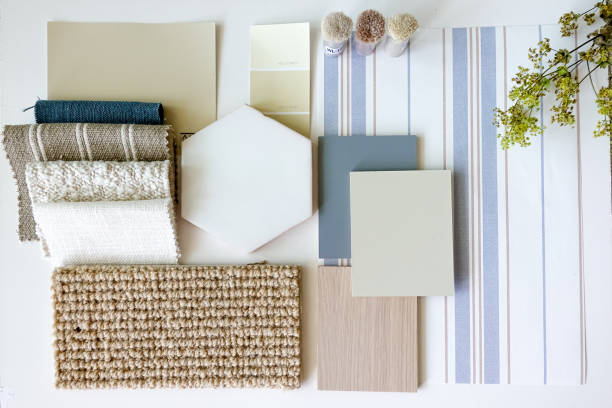
One of the most exciting aspects of moodboard creation is the opportunity to experiment with a diverse range of color palettes and textures, adding depth, richness, and visual interest to your design. Begin by exploring different color schemes that evoke the mood and emotion you want to convey with your moodboard. Whether you’re drawn to bold and vibrant hues, soft and muted tones, or sophisticated neutrals, the possibilities are endless. Experiment with complementary, analogous, and monochromatic color schemes, exploring how different combinations can impact the overall look and feel of your moodboard.
In addition to color, textures play a crucial role in adding tactile depth and dimension to your design. Incorporate a variety of textures, such as fabric swatches, natural materials, and digital overlays, to create visual contrast and tactile interest. Experiment with layering textures and combining different elements to achieve a harmonious balance that enhances the overall aesthetic of your moodboard.
Moreover, consider the psychological impact of color and texture on the viewer’s perception and emotional response. Certain colors and textures evoke specific associations and emotions, so be intentional in your choices to ensure they align with the mood and message you want to convey. Use color and texture strategically to create visual focal points, guide the viewer’s eye through your design, and evoke a desired emotional response.
Throughout the process of experimenting with color palettes and textures, embrace a spirit of curiosity and playfulness. Don’t be afraid to push the boundaries of conventional design norms and explore unexpected combinations that challenge the status quo. By embracing experimentation and embracing the creative process, you’ll create a moodboard that not only captivates and inspires your audience but also reflects your unique creative vision and style.
Refine Your Vision and Narrative
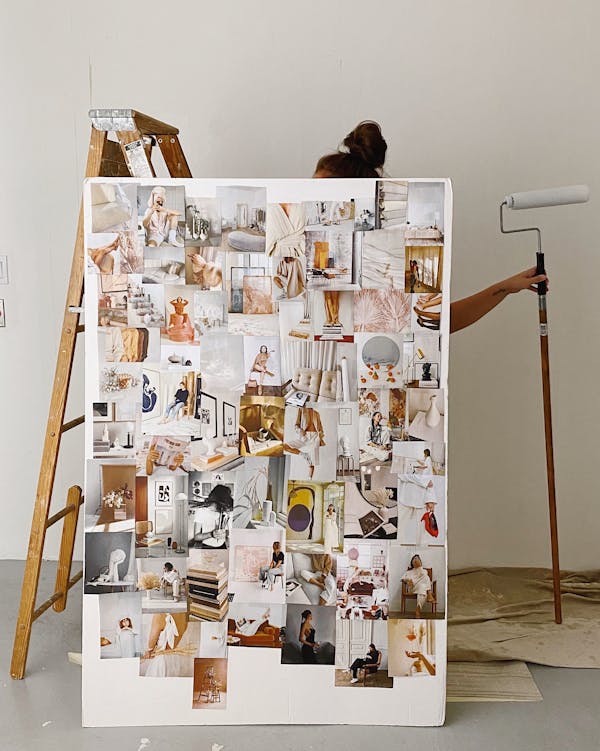
Once you’ve assembled your visual elements and experimented with various design elements, it’s time to refine your vision and narrative to ensure that your moodboard effectively communicates your message. Take a step back and review your moodboard with fresh eyes, paying attention to the overall composition, flow, and coherence of your design. Ask yourself if your moodboard accurately reflects the mood, tone, and aesthetic you want to convey, and if it effectively communicates the key themes and concepts of your project.
During this refinement stage, consider the narrative arc of your moodboard and how it guides the viewer through a cohesive story. Are there clear transitions between visual elements that create a sense of progression and movement? Is there a logical sequence or structure that leads the viewer from one idea to the next? By refining the narrative flow of your moodboard, you’ll ensure that it captivates and engages your audience from start to finish.
Moreover, pay attention to the details of your design, refining each visual element to ensure that it aligns with your overall vision and aesthetic. Experiment with different layouts, compositions, and typography choices, making adjustments as needed to enhance clarity and visual impact. Don’t be afraid to remove elements that detract from your message or add new ones that reinforce your narrative, refining your moodboard until every design choice serves a purpose and contributes to the overall cohesiveness of your design.
Throughout the refinement process, seek feedback from trusted colleagues, mentors, or collaborators to gain fresh perspectives and insights. Consider their input carefully and use it to inform your decisions as you continue to refine and polish your moodboard. By refining your vision and narrative with care and attention to detail, you’ll create a moodboard that not only captures the essence of your project but also resonates with your audience on a deep and meaningful level.
Share and Gather Feedback for Iteration
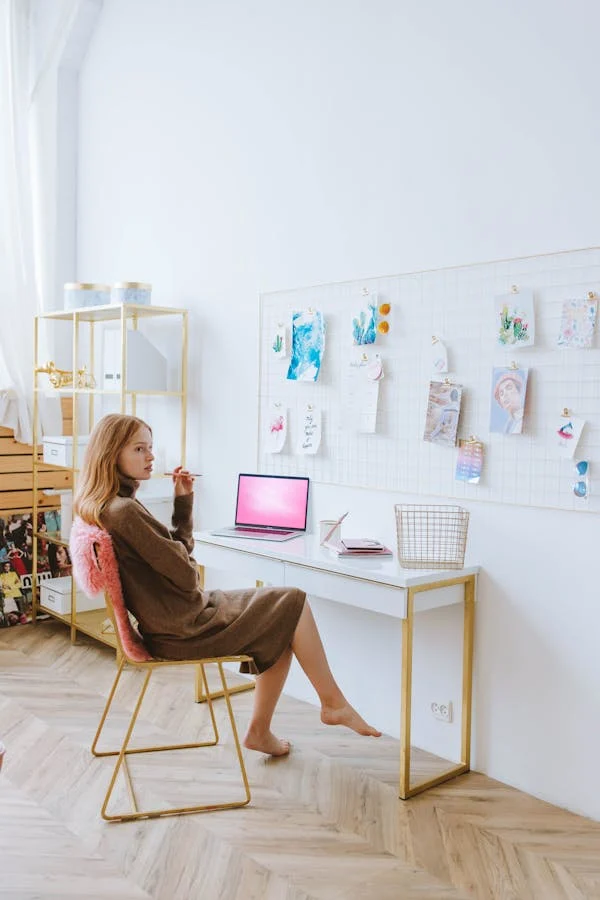
After refining your moodboard, it’s time to share your work with others and gather feedback for further iteration and improvement. Share your moodboard with trusted colleagues, mentors, or clients who can provide valuable insights and perspectives on your design. Encourage them to share their honest opinions and feedback, emphasizing that constructive criticism is essential for growth and refinement.
During the feedback process, be open-minded and receptive to different viewpoints, even if they challenge your initial ideas or assumptions. Consider each piece of feedback carefully and use it as an opportunity to gain new insights and perspectives on your design. Pay attention to recurring themes or patterns in the feedback, as these may indicate areas for further refinement or improvement.
Moreover, consider the context in which your moodboard will be viewed and the specific needs and preferences of your audience. Tailor your feedback requests to address the concerns and priorities of your target audience, ensuring that your moodboard effectively resonates with them on a deep and meaningful level.
As you gather feedback, be prepared to iterate on your design based on the insights you receive. Experiment with different ideas, layouts, and compositions, incorporating feedback from multiple sources to refine and polish your moodboard further. Don’t be afraid to step outside your comfort zone and explore new directions, as iteration is a natural part of the creative process.
Ultimately, the feedback and iteration process is an opportunity for growth and improvement, helping you to refine your vision and create a moodboard that truly captivates and resonates with your audience. Embrace the feedback you receive with gratitude and humility, using it to fuel your creative journey and push the boundaries of what’s possible with your design.
Wrapping up:
Empower Your Creative Process: 7 Key Steps to Mastering Moodboard Creation’ serves as a comprehensive guide for designers and creatives looking to elevate their projects through the art of moodboarding. By following these seven key steps – from defining your purpose and gathering inspiration to organizing your layout and refining your narrative – you’ll unlock the full potential of moodboarding as a powerful tool for visual communication and storytelling. Whether you’re a seasoned professional or a novice designer, these steps provide a roadmap for crafting moodboards that captivate, inspire, and resonate with your audience. So, dive in, embrace the creative process, and watch as your moodboards come to life with clarity, purpose, and creativity. With ‘Empower Your Creative Process’ as your guide, the possibilities for expressing your ideas and emotions through visual storytelling are truly endless.
